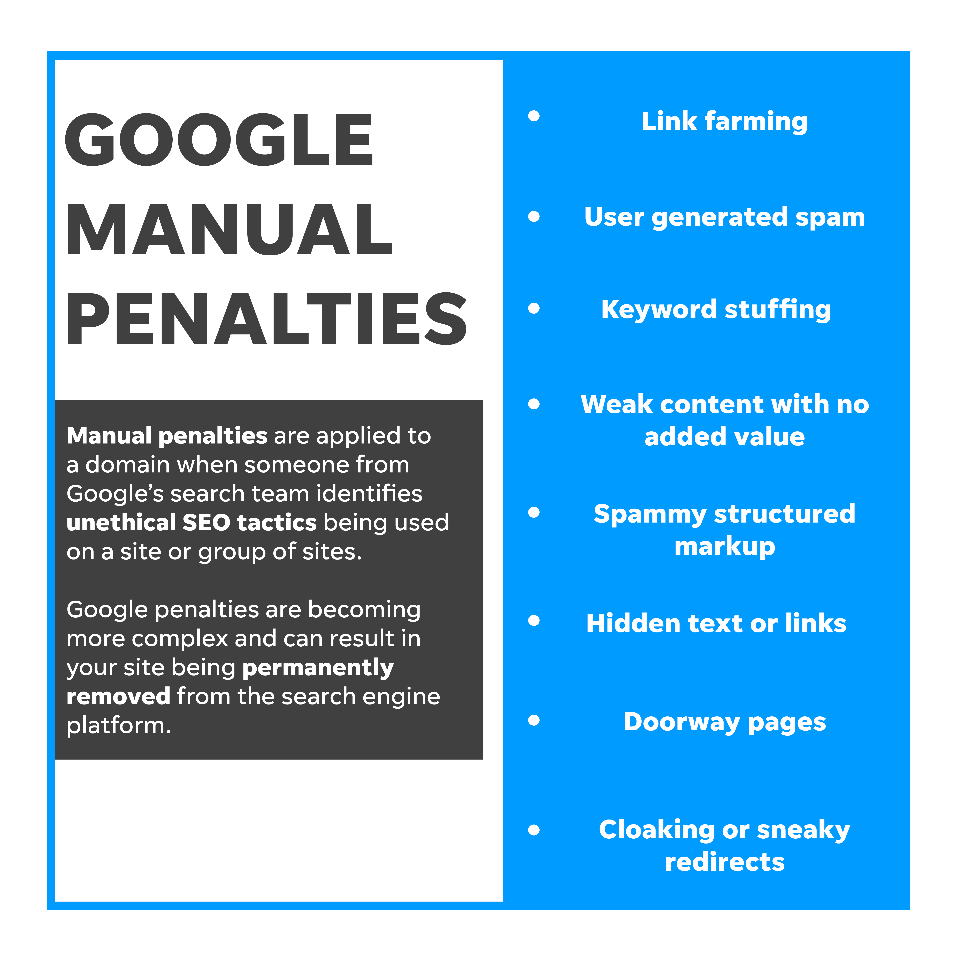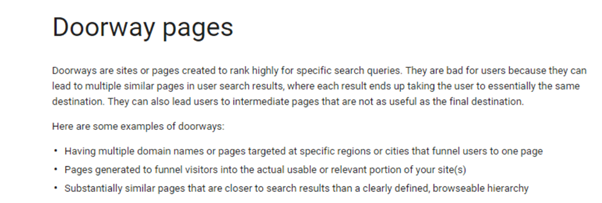In this blog we’ll take a look at the difference between white hat, grey hat, and black hat SEO. The white and black hat terminology originates from western movies filmed between the 1920s and the 1940s. White hats were often worn by heroes and black hats by villains to symbolise the contrast in good versus evil. This symbolism has been embraced across a range of industries to distinguish between ethical and deceitful practices. It is now common for virus creators, hackers, or anyone participating in unethical online behaviour to be linked to the term “black hat.”
What is White Hat SEO?
White hat SEO is when you follow search engines’ rules and only use ethical tactics which work within their guidelines to improve your website’s search engine results page (SERP) ranking.
The white hat tactics are authentic and organic online marketing strategies that bring relevant information to the human eye. Although it takes time to see results, implementing white hat SEO techniques tends to facilitate long-term search rankings growth and improves the quality of website visitors.
Importance of White Hat SEO
White hat SEO is important because it ensures that search engine results are accurate and relevant to search intent. When internet users find themselves on sites that aren’t relevant to their search query it is often because site owners are using deceptive SEO techniques to earn a higher rank on the search page.
Employing unethical tactics isn’t beneficial to anyone. The user wastes their time landing on pages with no use to them, and it also reflects badly on the search engine for promoting a webpage not suited or relevant to the users’ search query.
This can be detrimental to a search engine’s reputation and force users to their competitors, hence why they prefer people to use their approved SEO methods and constantly update their algorithms in favour of white hat practices within their guidelines. Although there are not necessarily any legal guidelines that say what ethical SEO looks like, if you don’t follow what is considered to be good practice, search engines will punish you in their rankings.
Should you always use White hat SEO?
In most cases the answer is yes, you should always stick to recommended guidelines and best practices. Implementing white hat SEO practices is the best way to create an ethical, sustainably successful website and business. However, there are exceptions as some industries themselves are classified as black hat, for instance, cybersecurity, suggesting in some cases devious SEO tactics are needed to remain competitive.
White Hat SEO Techniques:
Here are some tactics and techniques you should follow to ensure your SEO methods are strictly white hat.
Techniques used in white hat SEO include:
- Posting quality and valuable content.
- Using content-relative keywords.
- Conducting keyword analysis and keyword research.
- Writing keyword rich page titles and meta tags.
- Well-structured markup language.
- Backlinking to sites that are relevant and valuable.
- Simple website navigation and good website structure.
- Adopt a mobile friendly approach.
- Fast page loading times and responsiveness.
- Website analysis and redesign.
Search Engine Guidelines
These guidelines are intended to help you understand how individual search engines find, index, and rank websites.
Google’s Webmasters Guidelines
Bing’s Webmaster Guidelines
What is black hat SEO?
Black hat SEO is an attempt to manipulate search engine algorithms to increase a website ranking. Although, black hat tactics may get a site higher SERP rankings, these unethical techniques try to deceive search engines and users by spamming the search engines with irrelevant content.
A black hat SEO strategy ignores the way humans interact with a website and solely focuses only on misleading search engines. These tactics typically have short-term gains and long-term penalties attached to them.
Why avoid using black hat SEO?
It’s important to realise implementing black hat SEO tactics and strategies can carry inherent risks. These practices are disapproved by search engines and using them can result in your site being banned from the search engine and affiliate sites.
While increased traffic might be a short-term benefit, Google penalties are becoming more complex and can have detrimental effects on your rankings. If caught, search engines will penalise you for violating their guidelines by removing some or all your website content from their search indexes.
As search engines become aware you are using black hat strategies, you will find that your search engine results ranking begins to fall. Google is an extremely powerful source of traffic to your website, so being banned can result in a drastic drop in website traffic which ultimately has a knock-on effect on your overall business performance. The worst-case scenario is that your website may be permanently removed from the search engine platform. A lifetime ban from Google has tremendous consequences. Can you really afford to be banned from using the most effective traffic referral source on the internet?

Black hat SEO techniques
The techniques that are commonly used in Black Hat SEO are:
- Keyword stuffing
- Link farming
- Hidden texts and links
- Cloaking
- Doorway pages
Let’s take some time to understand each of these SEO techniques to ensure you stay away from them.
Keyword stuffing
Keyword stuffing is the practice of inserting a vast number of keywords onto webpage content in attempt to artificially increase a webpage or websites ranking on SERPs. This technique consists of using the same keyword, or similar keywords, many times on a single webpage.
Here is an example of keyword stuffing:

Keyword Stuffing: What is it? And how do you avoid it?
Link farming
Link farming is a black hat tactic whereby a website, or group of websites, are created for the sole purpose of increasing the link popularity of another site by increasing the number of incoming links. These websites, often called link farms, all hyperlink to other sites in the group which exploit Google’s search algorithm to increase SEO rankings. A link farm usually looks like a regular web page, but most will include poor quality content and contain lots of random hyperlinks to other websites.
What is a Link Farm? and how to avoid them.
Watch a video at SEO Moz about why link farming is bad for SEO.
Hidden text or links was one of the first black hat SEO spam techniques invented, it involves hiding text from users and only showing it to search engines. Hidden text can enhance user engagement, increase accessibility, and increase crawl rates.
Google declares text (such as excessive keywords) can be hidden in several ways:
• Using white text on a white background
• Locating text behind an image
• Using CSS to position text off-screen
• Setting the font size to 0
• Hiding a link by only linking one small character—for example, a hyphen in the middle of a paragraph
However, not all hidden text is considered deceptive. There are legitimate reasons to use hidden text, you just need to remember that the content needs to serve purpose to readers.
How to use SEO-friendly hidden content.
Cloaking
Cloaking refers to the practice of presenting different content or URLs to human users and search engines to improve websites search engine rankings for certain keywords. Some websites use this technique to generate traffic on their website at the expense of user experience.
What is Cloaking in SEO and its types.
Doorway pages
Doorway pages are pages on your website which have been created to rank for specific or similar search queries. These are bad because the search results can end up with numerous similar pages in them, where each result leads the user to the same website.
Here are some examples of a Doorway page:

Image source
What is a Doorway Page and How it Affects SEO Of Your Website?
What is grey hat SEO?
As you can probably assume, grey hat SEO sits somewhere in the middle of white hat and black hat tactics. Essentially it is a SEO strategy that combines white hat and black hat SEO to improve search engine rankings and visibility for a website.
It is difficult to accurately define what grey hat SEO is because it changes intermittently, so what is considered grey hat one year could be classified as black or white hat the next.
In contrast to black hat SEO, grey hat SEO involves techniques that do not always violate search engine guidelines. Although these practices may not result in SEO penalties for your website, grey hat SEO is still risky because it exploits the search engine guidelines to increase a page’s rankings on the SERPs.
Depending on which techniques you use, you may be crossing the line to black hat SEO, putting your rankings at risk. If you are thinking about dabbling in grey hat SEO be wary and stay updated with the latest search engine guidelines because they can tighten their algorithms to crack down on activities that are borderline against their guidelines at any given time.
Grey hat SEO techniques:
- Domain Grabbing
- Spun Content
- Paid Links
- Careful keyword stuffing
Domain Grabbing
Domain grabbing is one of the most commonly used grey hat SEO tactics. In essence, it is the practice of registering internet domains with the intention of selling the ownership rights rather than keeping them for their own personal use.
The goal of this technique is to increase your website’s backlink profile and SEO by purchasing expired domains. This is because existing domains typically carry an authority that can be built upon.
The Anti-cybersquatting Consumer Protection Act categorises domain grabbing as one of the following:
- Registering or using a domain name that is identical or confusingly similar or to a distinctive or famous registered trademark.
- Registering a domain in bad faith (with the purpose of profiting from the use of such trademark).
Spun Content
Spun content or content spinning involves taking content from another website and then rewriting it sentence-by-sentence to make it hard for plagiarism software to detect. Posting spun content on your own website will allow it to rank for the keywords you want to target.
Paid Links/Link Exchange
Buying links and trading links are the second most popular grey hat SEO techniques used by webmasters to increase their websites authority and rankings. This is the practice of exchanging links with other websites or blogs, building backlinks to several sources.
Although, link schemes like this are technically black hat SEO tactics because they violate Google’s Webmaster guidelines. If you are considering using this tactic, start by forming a list of all relevant blogs in your industry, then directly contact each of them with a proposal to help to promote each other’s content on your respective websites.
Careful keyword stuffing
As previously discussed in the black hat SEO section, keyword stuffing is an attempt to artificially increase a webpage or websites ranking on SERPs. However, that is not to say you shouldn’t use keywords throughout your content because you definitely should!
Using a primary keyword three or four times is an effective way of boosting organic SEO. There are four essential places where you should include your keywords:
- Titles
- URL
- Meta description
- Headers and body paragraphs
Having keywords within title tags, H2, and H3 tags, URLs, and the beginning and end of the content is considered a positive stuffing method.
Want help with keyword research? Use our tips for conducting effective keyword research.
SEO best practices:
- Use white hat SEO tactics to grow organic rankings.
- Post original high-quality and valuable content.
- Conduct keyword analysis and keyword research.
- Write keyword rich page titles and meta tags.
- Use well-structured markup language.
- Backlink to sites that are relevant and valuable. Aim for high-quality inbound links.
- Good website structure and simple website navigation.
- Adopt a mobile friendly approach.
- Fast page loading times and responsiveness.
- Regularly conduct a website analysis and redesign.
In summary this blog has discussed that white hat SEO is the best way to create an ethical, sustainably successful website and business. Furthermore, implementing white hat SEO techniques tends to facilitate long-term search rankings growth and improves the quality of website visitors.
On the other hand, black hat SEO techniques tactics and strategies carry inherent risks. Whilst increased traffic might be a short-term benefit, search engine penalties are becoming more complex. This can have detrimental effects on your rankings and even result in your site being banned from the search engine and affiliate sites.
In contrast to black hat SEO, grey hat SEO involves techniques that do not always violate search engine guidelines. Although these practices may not result in SEO penalties for your website, grey hat SEO is still risky because it exploits the search engine guidelines to increase a page’s rankings on the SERPs.
Whilst it can be tempting to find shortcuts and quick fixes, acting with integrity always brings the best results in business.
If you are looking to grow your website’s visibility online, then let us know how we can help. Get in contact with one of our SEO experts today.






